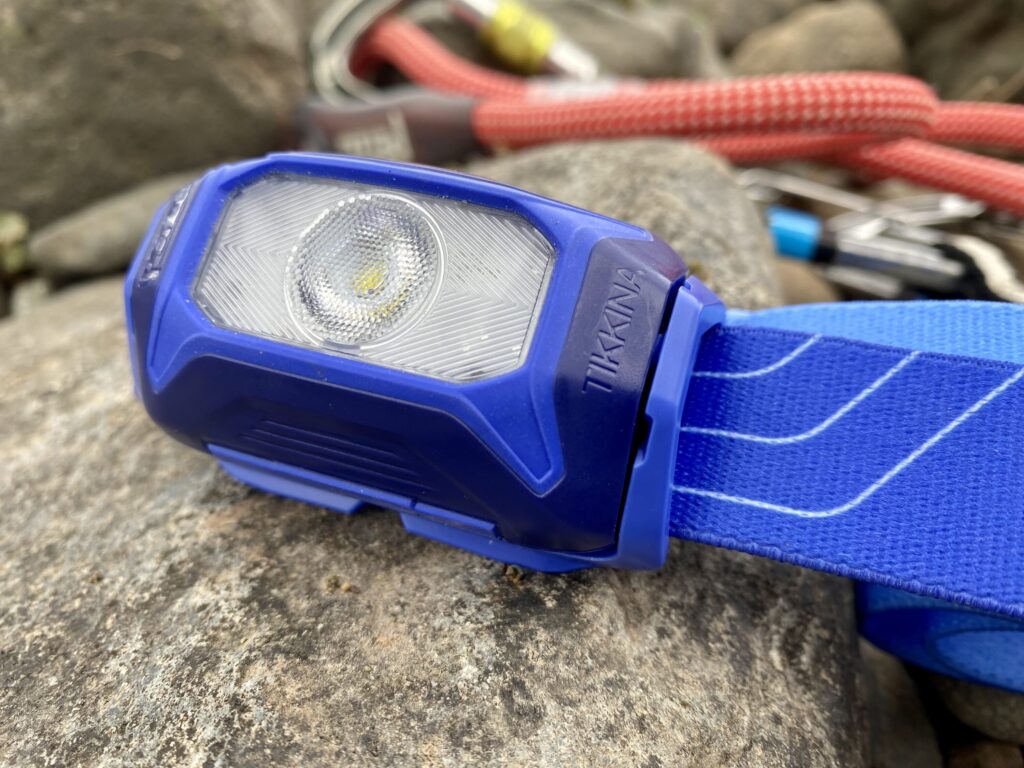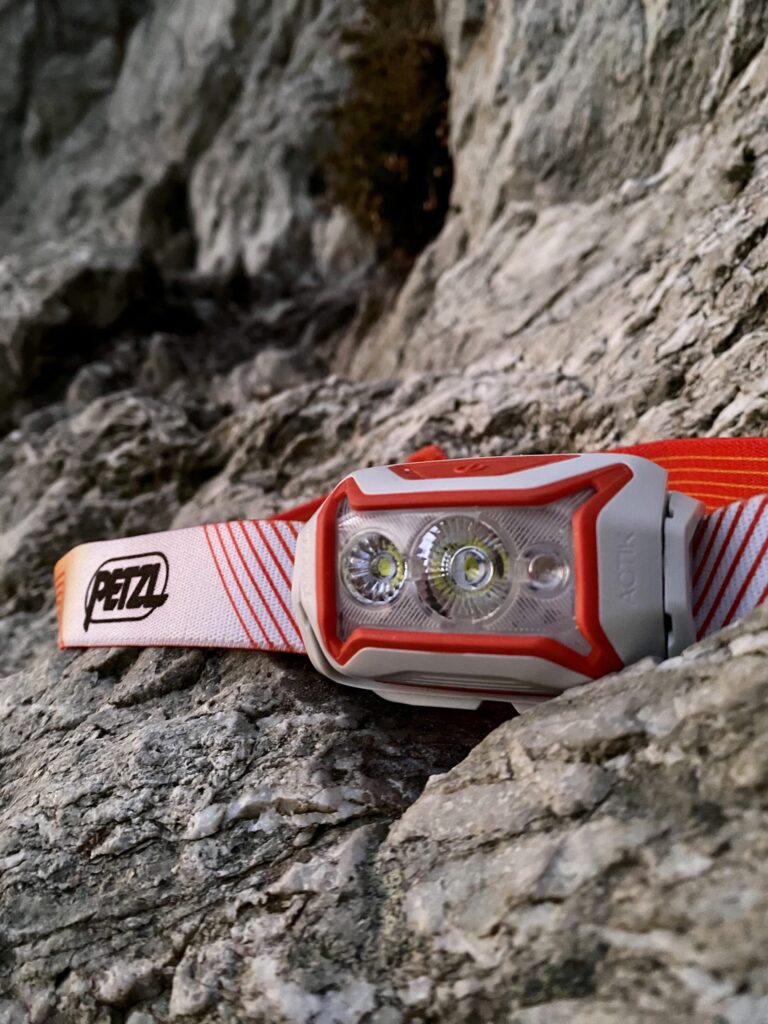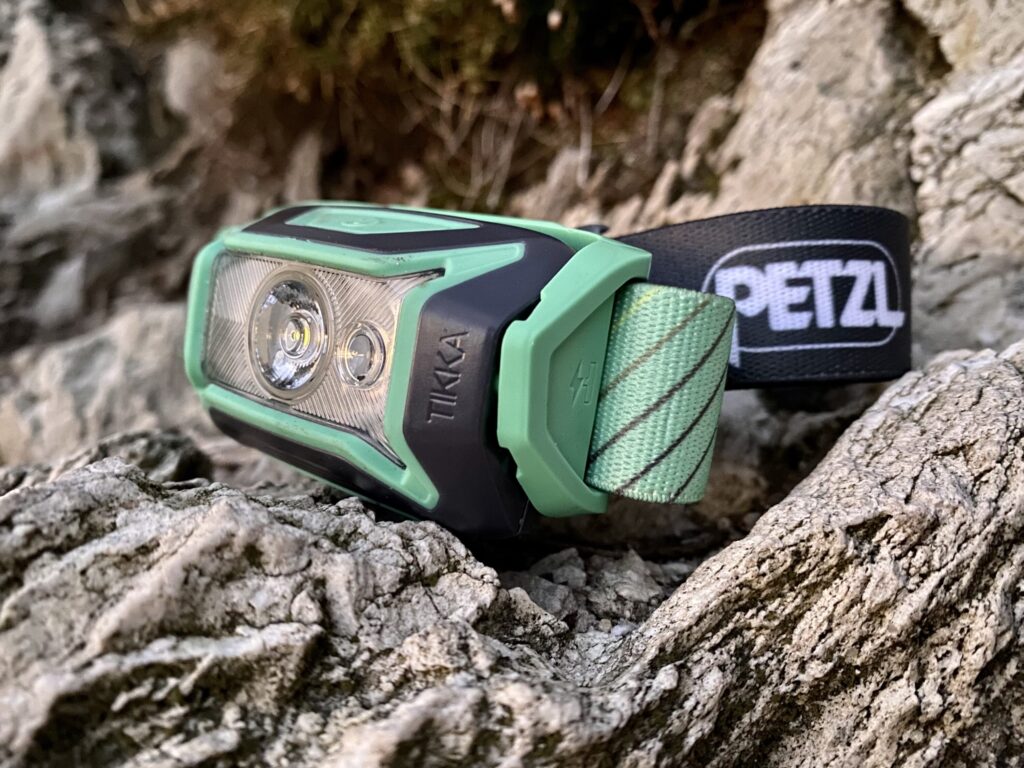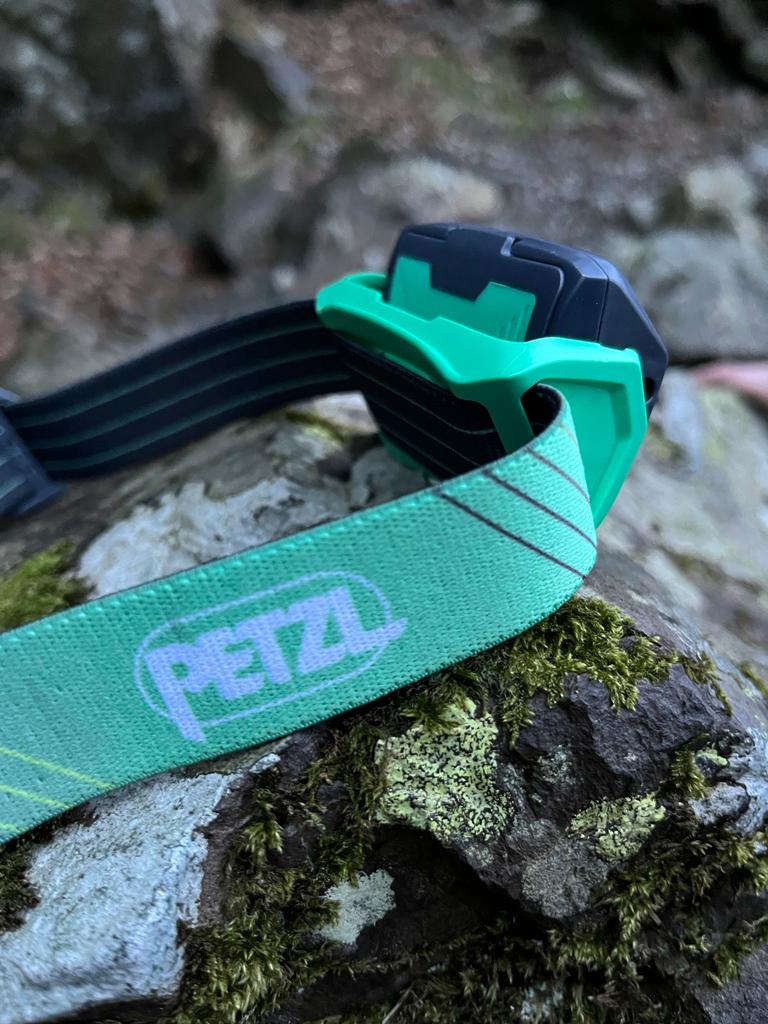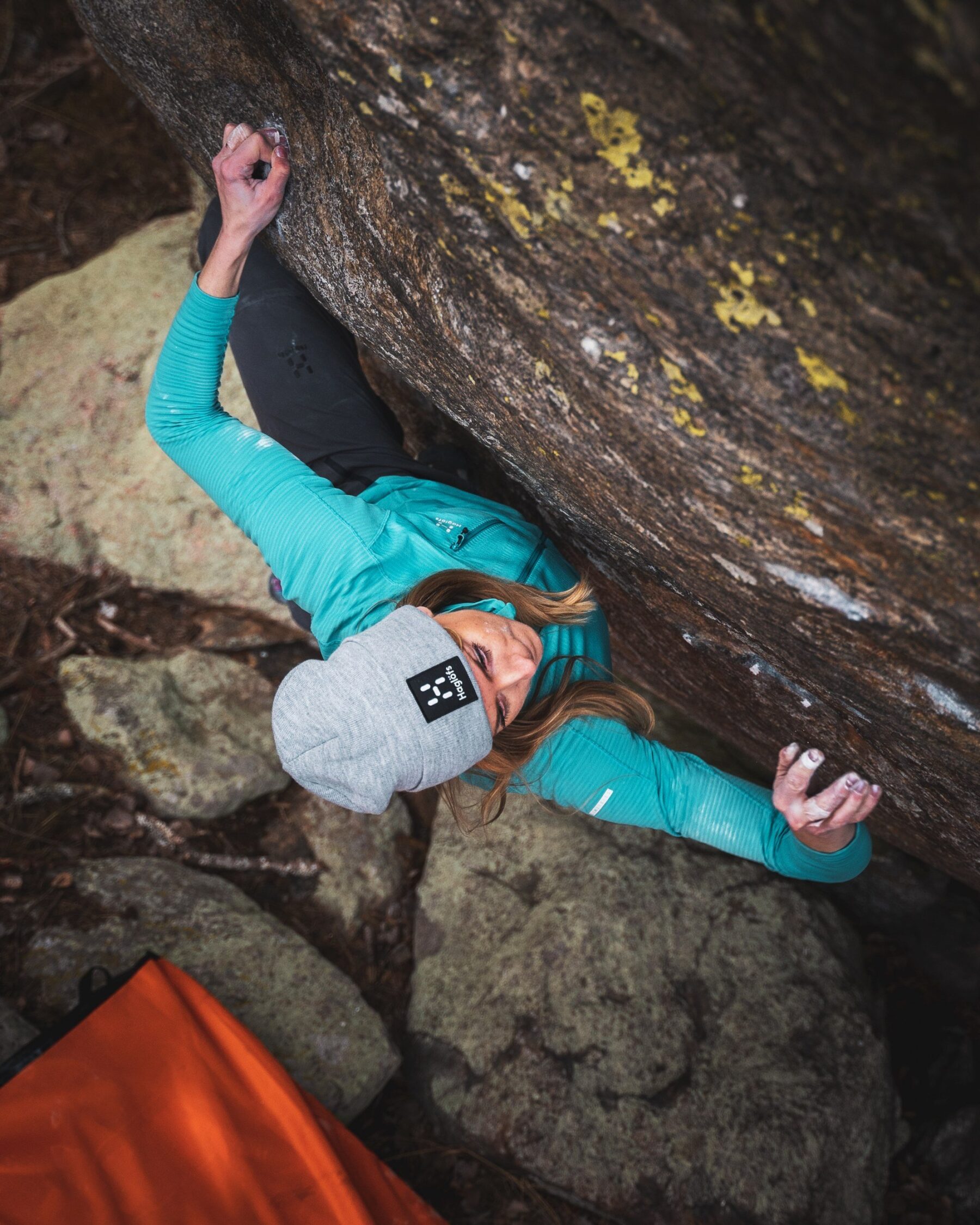Ok, let’s talk about lighting. Undeniably, one of the absolute essentials for every adventurer’s outdoor arsenal is a decent headtorch.
If you’ve ever gone dramatically off-route on a hike, had ‘an epic’ on a climb or simply lost track of time to find yourself desperately trying to locate the pub in encroaching darkness, you’ll know just how handy a headtorch can be. I am of course being a little flippant here; a headtorch isn’t only handy, it is actually a key piece of safety kit for anyone heading out in the hills. Regardless of the weather or your anticipated timeframe, having a headtorch on hand when things don’t go to plan can be a literal life saver.
Start googling ‘headtorches’, and it’s easy to feel overwhelmed with the options on offer. There are headtorches for hiking, biking and running; there are models to suit every niche, with varying tech, functions and price tags. So what if you just need no-nonsense, simple, reliable lighting that won’t leave your wallet completely empty for when you do eventually reach the pub?
Petzl are a market-leader in lighting, and the TIKKA is the model that launched it all as the brand’s first LED headlamp some 20 years ago. The TIKKINA is arguably the TIKKA’s slightly simpler spin-off, with the ACTIK being the most feature-heavy and powerful of the trio. All three designs had a revamp in late 2022, with updates to their appearance and functions. The TIKKA, TIKKINA and ACTIK do share some common features, but they also have some key differences, and price tags to reflect those.
Aesthetically, all three models are very similar. They’re rugged and have a compact, streamlined casing. They’re grippy, easy to adjust, have soft, comfortable headbands with reflective elements and they each fit very well over hoods and helmets.
The range of motion for angling the lamps has been improved, and you can completely remove the lamps from their headbands to use in conjunction with Petzl’s Helmet Adapt systems if you wish.
All three models are LED (Light Emitting Diode) headtorches, though they each have different brightnesses and beam functions (more on those further down). Now to the befuddling bit: how bright should my headtorch be? Each of the lamps has a different brightness level (measured in lumens), and different brightnesses are suited to different activities and levels of technicality. For example, a headtorch of 100-250 lumens would likely be sufficient for camping or urban use, and you might consider something around the 400 mark for trail running, but it very much depends on the environment and your proximity to other objects and people!
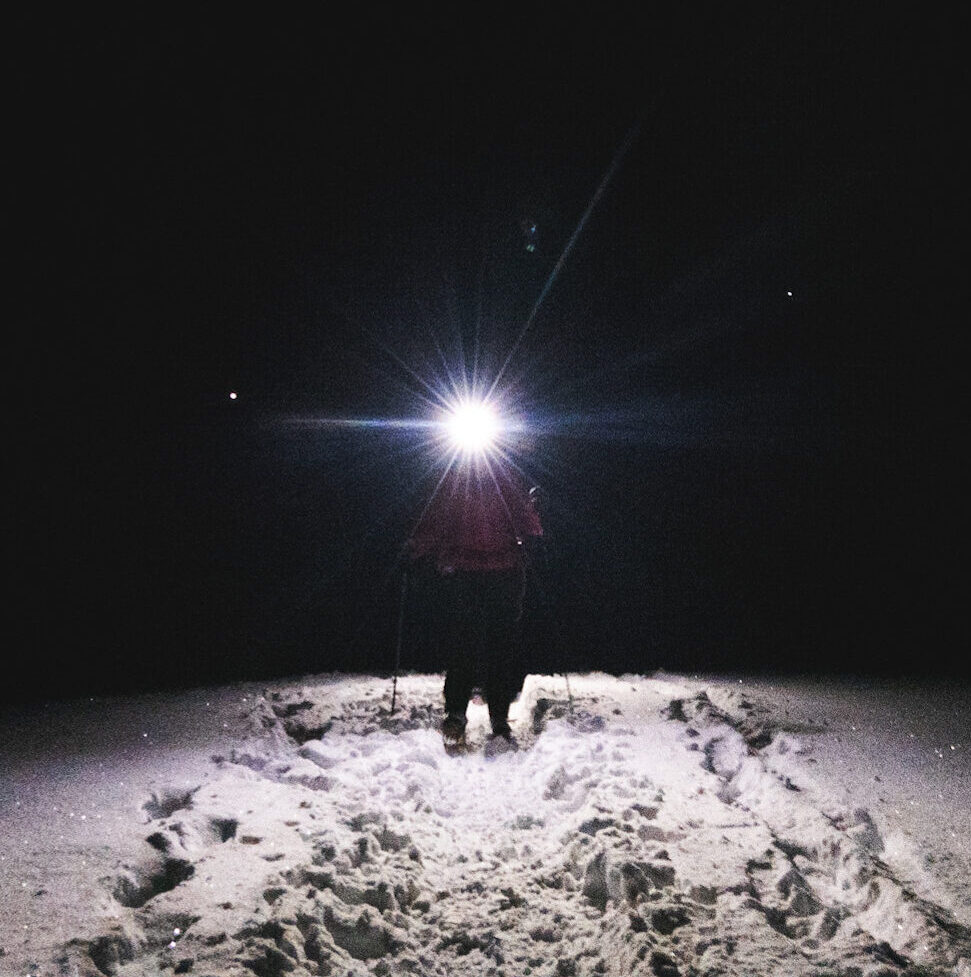
© Rachel Sarah
A number of Petzl headtorches are now available with a hybrid concept battery system, which means that they can operate using standard AAA batteries or a Petzl Core USB-rechargable battery. We tested the ACTIK CORE and TIKKA CORE, and the TIKKINA over a period of months on night hikes, scrambles and climbs. It’s important to note that the TIKKA and ACTIK models are also sold as a standard, non-CORE versions, but still have the hybrid concept system and that same duality, they simply don’t come with a CORE battery included.
If you shop around, you’ll find that Petzl CORE batteries alone range between £20-£30. The availability of non-CORE versions is handy if you’re strapped for cash, already have a CORE battery to spare, or simply don’t need recharging capabilities. You can also move the CORE battery between compatible torches, which is exactly what we did in order to test each torch’s capability with both types of battery. Using a CORE battery instead of AAAs will also save you 10g of weight on all models, and adds further brightness to the ACTIK and TIKKA lamps.
Still scratching your head and wondering which is the best headtorch for you? Read on for an in-depth review of three of Petzl’s newly revamped lamps.
BEST FOR: Camping and dog walks in the dark
Petzl TIKKINA
The TIKKINA is wallet-friendly, uncomplicated and an impressively bright lower-budget option that’s perfectly suited to campouts and entry-level adventure.
| RRP | As low as £17-£22 online |
| Weight | 92g |
| Brightness | 300 Lumens |
| Water Resistance | IPX4 (weather-resistant) |
| Features | Hybrid concept battery system, 3 X white light levels |
Pros
- Exceptional value for money
- Impressive power and burn time
- Helmet and bike adapter compatible
Cons
- Lacks some of the functions of its counterparts (though for the price, you can’t really quibble!)
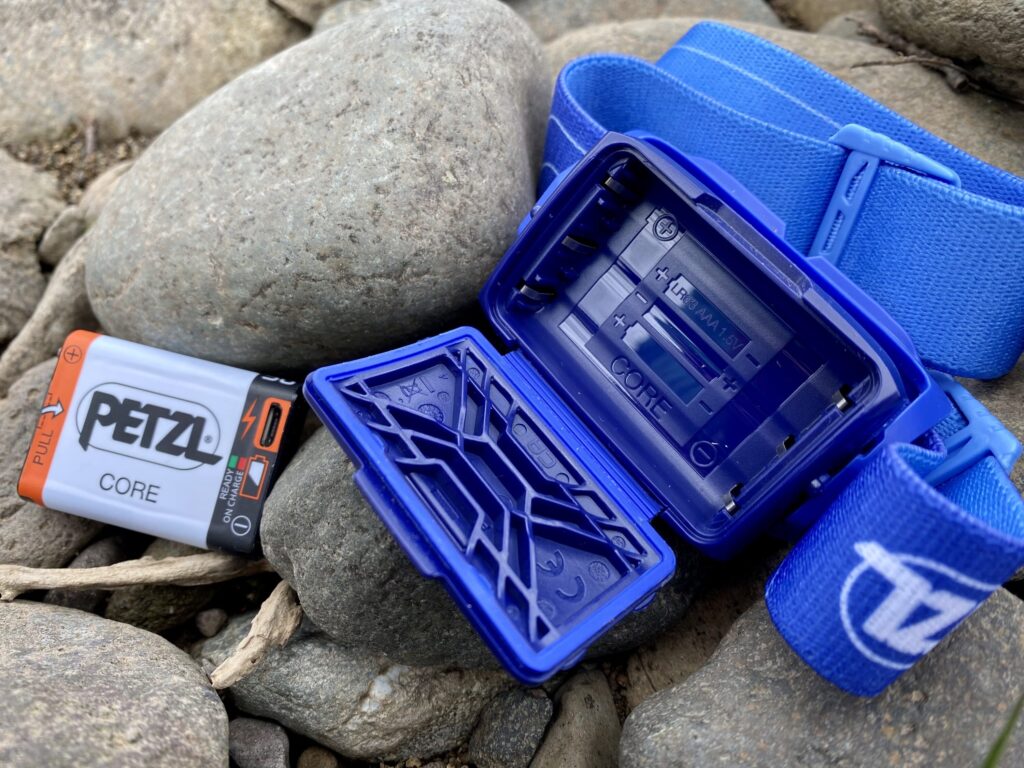
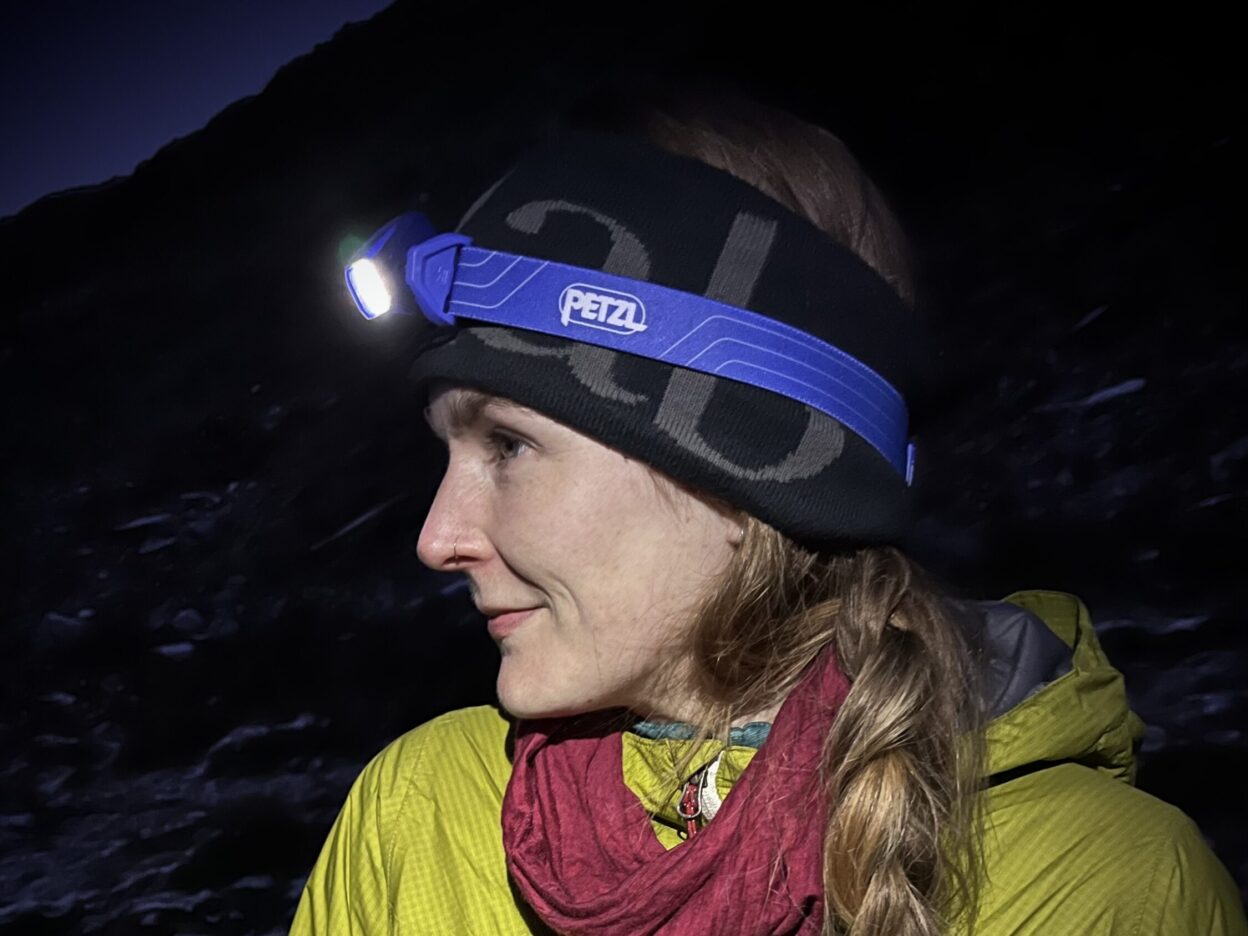
Our Verdict
when used in conjunction with the Core battery, the TIKKINA just kept going, and going…
We begin with the TIKKINA, which is the lowest in price and the simplest model in terms of features. The TIKKINA has a uniform, wide beam pattern with three brightness levels which you cycle through by pressing the one and only button on the top of the lamp. That’s really it in terms of function, but let’s not forget the common features of all the lamps, and the TIKKINA has the same rugged casing, adjustability and capacity to be used with helmet and bike mounts of its more powerful counterparts.
The TIKKINA doesn’t come in a CORE version, which makes sense because it IS the budget model in the range. That said, it has the hybrid battery system so can be used with a CORE battery if you choose to. With a maximum brightness of 300 lumens, I found that when used in conjunction with the CORE battery, the TIKKINA just kept going, and going… If you’re into specifics, the TIKKINA has a burn time of 100 hours with AAA’s and 120 with a Core battery at its lowest light output, 10 (AAA) or seven hours (CORE) at standard brightness and 2 or 3 at full whack.
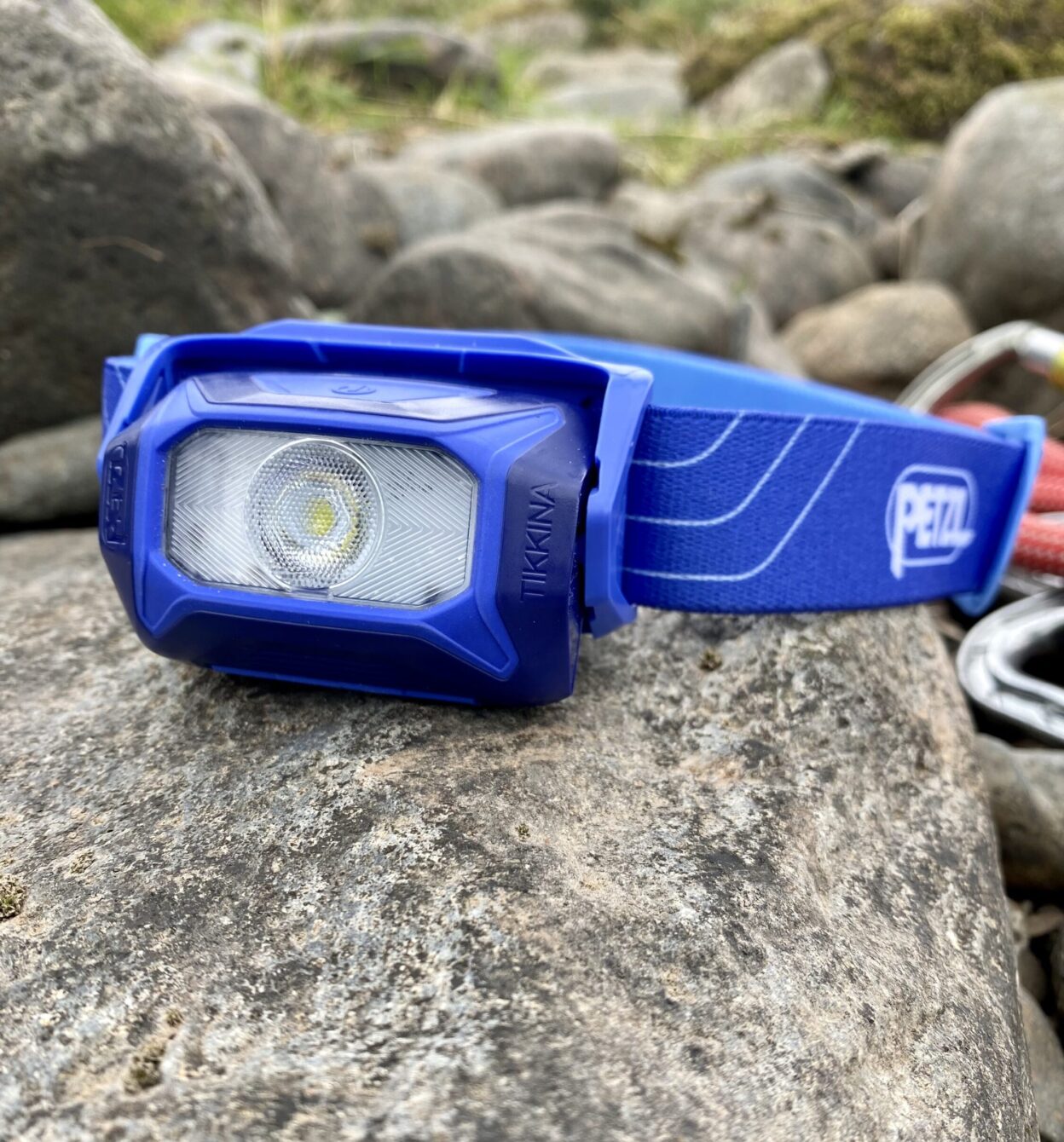
The TIKKINA is powerful for its price tag, and the burn times are impressive, but compromises have been made in keeping the price so reasonable. Unlike the other two lamps in this lineup, the TIKKINA lacks a lock function and a battery life indicator. As someone who frequently carries a pretty weighty pack, I found on a couple of occasions that it had been squashed into action, and was illuminating the contents of my crag bag at full brightness. Not ideal if you’re relying on it for a sketchy descent, but I’d hazard a guess that that isn’t the TIKKINA’s intended purpose anyway.
On balance, a lock function is a pretty high expectation of a lamp of this price, and a battery indicator is probably more useful in situations where a flat battery could be dangerous (in which scenarios, you’d likely have a backup lamp as well). For those reasons, the weather-proof toughness of the TIKKINA is a pretty great bet for camping, dog walks in the dark, short-distance night hikes or any other not-too-technical excursion where it primarily stays on your head. It’s a bargain for a really good quality piece of kit.
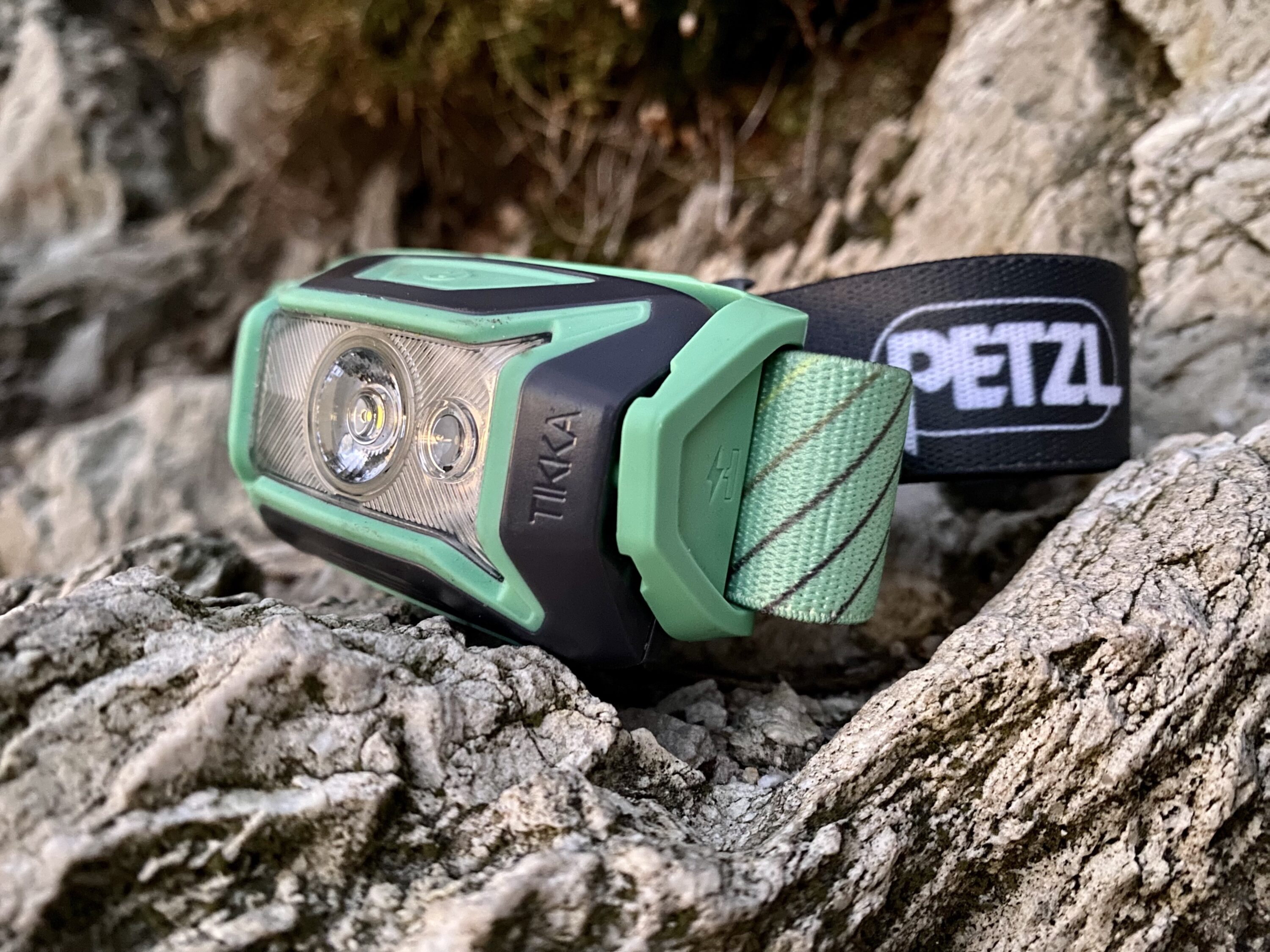
BEST FOR: Longer night hikes and a crag bag back-up
Petzl TIKKA CORE
The original, tough, straight-talking torch with a few new features that make it even better value for money.
| RRP | £25-32 standard / £39-57 CORE |
| Weight | 94g AAAs / 84g CORE |
| Brightness | 350 lumens AAAs / 450 lumens CORE |
| Water Resistance | IPX4 (weather-resistant) |
| Features | Hybrid concept battery system, 3 X white light levels + red light, charge indicator, lock function |
Pros
- Packs in a lot of functions for a relatively low-price lamp
- Reliable and easy-to-monitor battery indicator
Cons
- None that we can find!
Our Verdict
The TIKKA has a uniform, wide beam pattern with three brightness levels which you cycle through by pressing the button on the top of the lamp. You can activate the red light by holding the button down when the lamp is switched on, and lock the lamp by doing so when it is turned off. So why do headtorches have a red light anyway? The red light function on a headtorch is effectively for a gentler kind of ‘night vision’, when you are with other people at close proximity. Red light on a headtorch is also less intrusive to wildlife, won’t dazzle you when you’re map reading, and can be used to attract attention in an emergency.
Balancing your battery life with brightness level is fairly straightforward: in max power mode, you’ll get a maximum output of 450 lumens for two hours with a CORE battery, and 350 lumens with AAAs. In standard power mode, you’re looking at 100 lumens for seven hours with a CORE, and 12 hours with AAAs. At the lowest light level, you’ll get seven lumens for a very healthy 110 hours with both battery types. The TIKKA has a green/amber/red light that indicates battery level too, so it’s easy to keep an eye on. We were sent the CORE version of the TIKKA, but also tested it with AAAs, finding the burn times indicated by Petzl to be pretty much spot on.
Because of the single, wide beam pattern, the TIKKA might be a more useful asset when you’re not facing things at varying distances – walking on consistent terrain for example, rather than negotiating sections of scrambles or reading rock routes. The three brightness levels and width of the beam mean it is comfortable at close proximity however, so a pretty good option for night navigation and hiking. The lock function makes it a reliable emergency lamp to stash in your crag bag too, especially if you prefer to use something with reactive lighting or an adjustable beam pattern on the more technical parts of your adventure. It’s always a good idea to have a backup!
The TIKKA has decent weather resistance which easily withstood a shower and has a nice balance of being reasonably light whilst withstanding the knocks and drops that come with an active, outdoor lifestyle.
The lock function makes it a reliable emergency lamp to stash in your crag bag
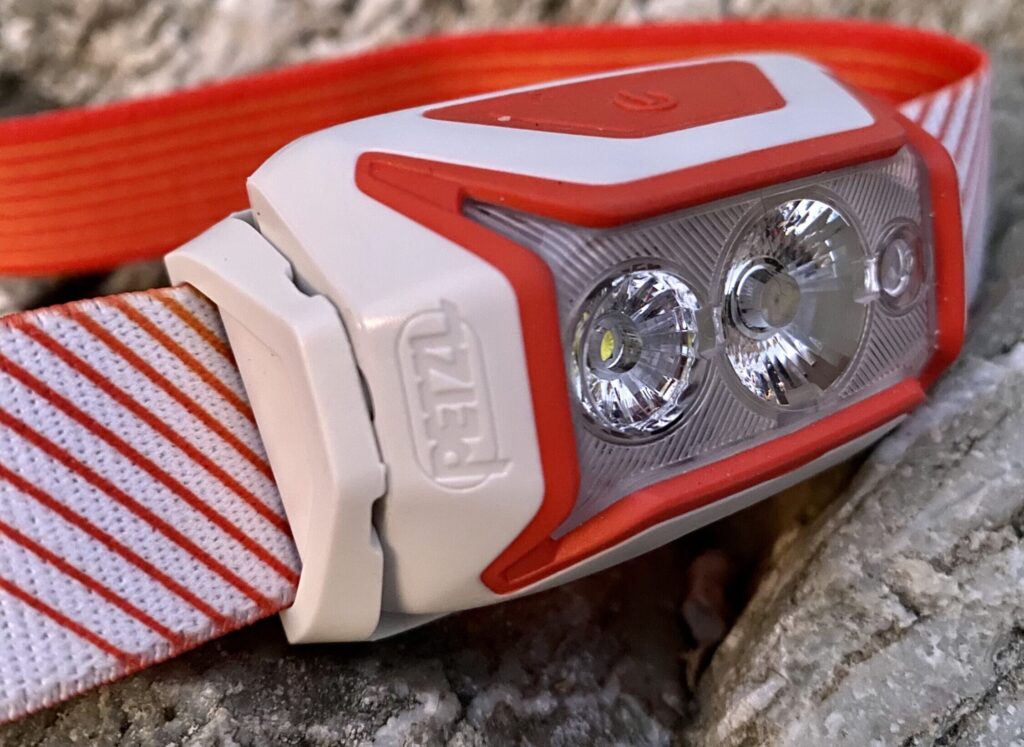
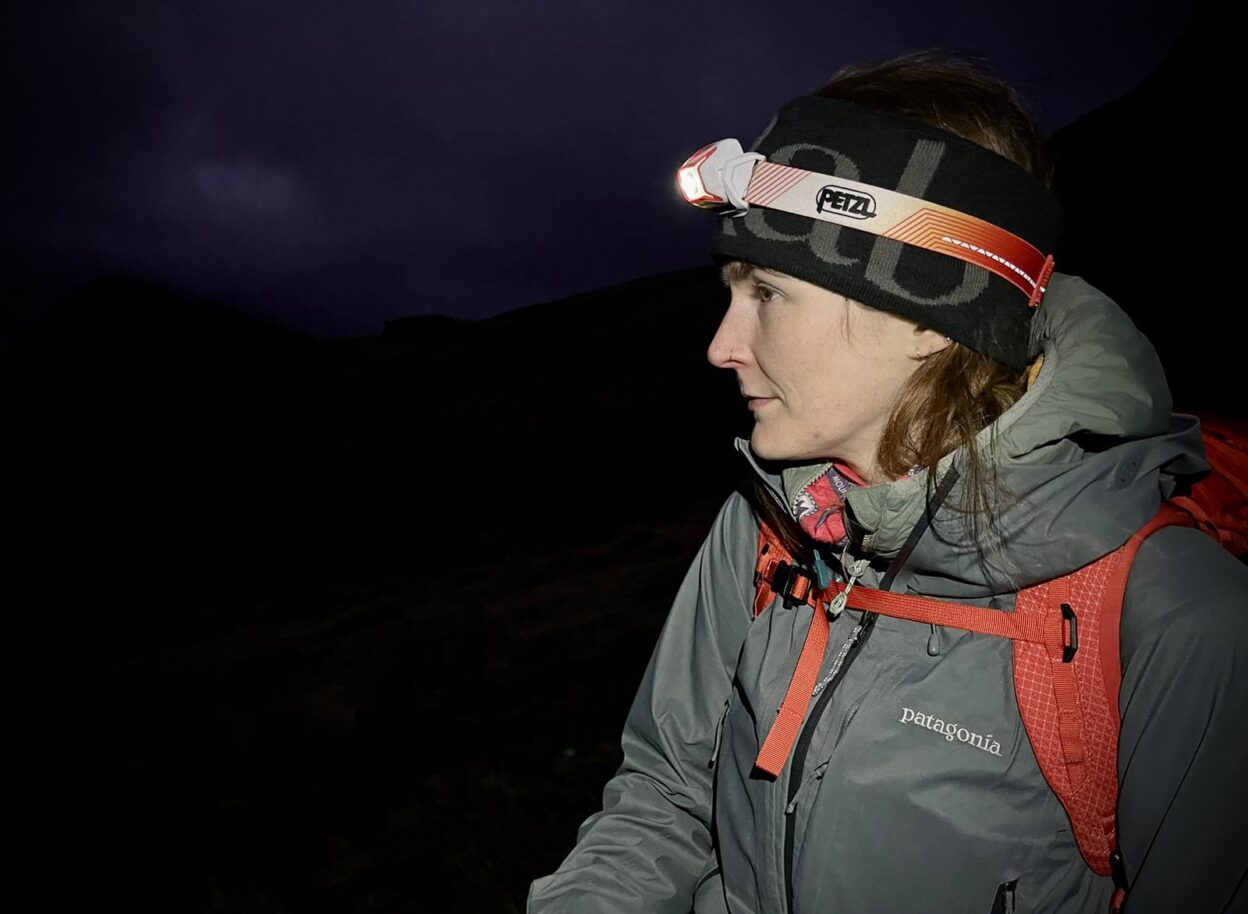
BEST FOR: Technical outdoor activities and descents in the dark
Petzl ACTIK CORE
A lightweight, go-to torch for scrambling, climbing and hiking or running on mixed terrain.
| RRP | £32-47 standard / £59-72 Core |
| Weight | 98g AAAs / 88g CORE |
| Brightness | 450 lumens AAAs / 600 lumens CORE |
| Water Resistance | IPX4 (weather-resistant) |
| Features | Hybrid concept battery system, 3 X white light levels + red light, mixed beam (flood and focused), charge indicator, lock function |
Pros
- Power-weight ratio = rad!
Cons
- We’re still trying to find one…
Our Verdict
Before the eagle-eyed amongst you point out that I said the ACTIK is lightweight when it’s actually the heaviest of the three – consider that it packs a hefty 450 lumens of power and some additional functionality into almost identical casing for just 4g more than the TIKKA. I think that’s pretty impressive.
Being able to toggle between beam patterns is really handy if you’re a taking on multiple types of terrain
The ACTIK is the most feature-heavy of the three lamps, with three white light levels, flashing and continuous red light, but also those added beam patterns too. But what are beam patterns on headtorches, anyway? Well, if you’ve ever tried running with a headtorch in spotlight mode, you’ll know it can make you feel oddly off-balance, and if you’re looking for the line of least resistance on a rock face, a floodlight isn’t going to help you pick out useful features. Being able to toggle between beam patterns is really handy if you’re a taking on multiple types of terrain, and the ACTIK does this with that one button. It took me a bit of fiddling to figure out the button-pressing patterns to activate each function, but once you’ve got the hang of it, it’s pretty intuitive.
Right then you number-lovers: The ACTIK will burn for 100 hours at its lowest level (7 lumens) with both Core and AAA batteries. At standard power, it’ll go for 10 hours with AAA’s and 7 with a Core. At maximum output, you can expect a burn time of two hours with both battery types.
The ACTIK feels like a really good option in terms of a reliable, technical torch for climbing, scrambling and descending in the dark, and I imagine its power-weight ratio and beam patterns are a big draw for fell runners too.
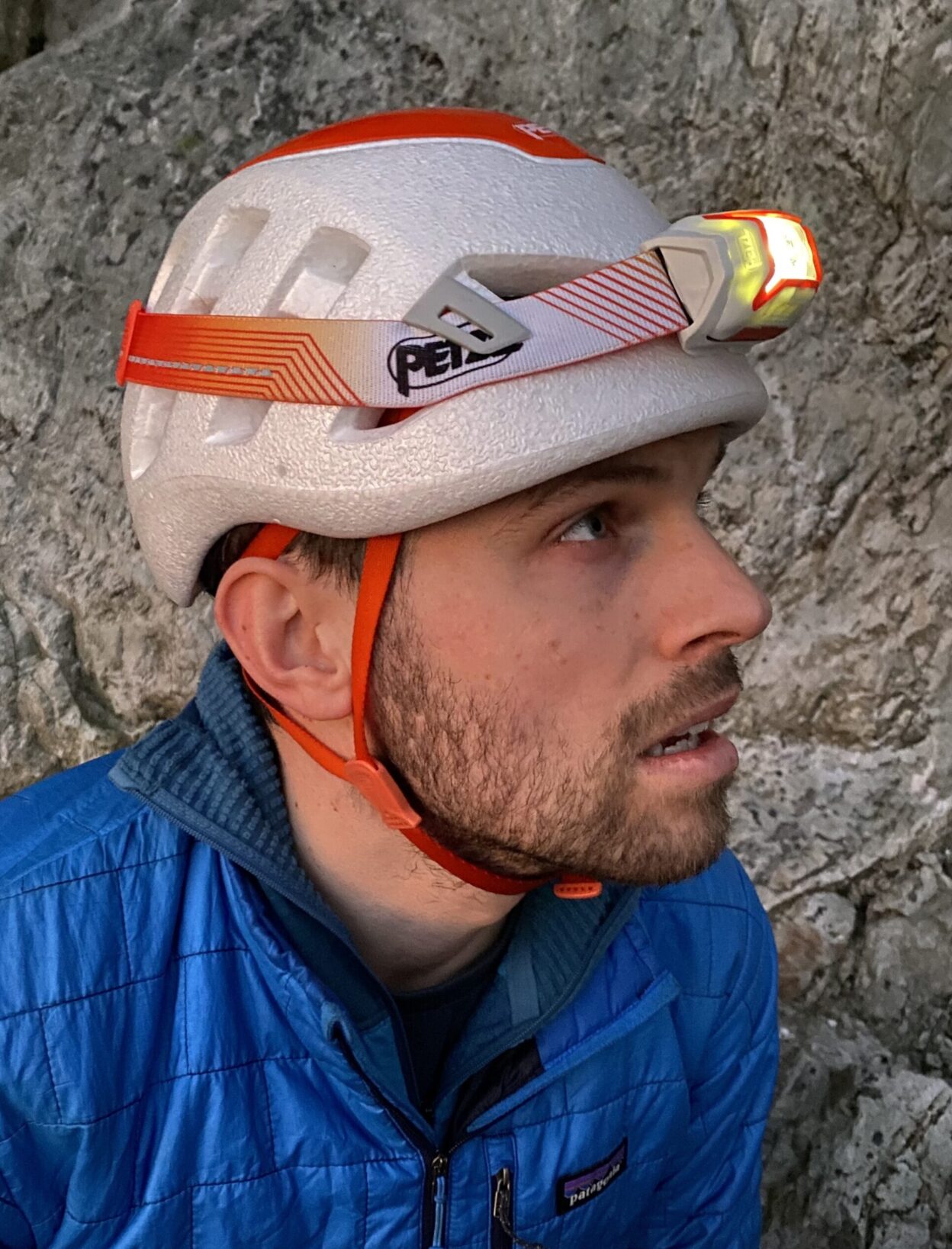
BASE Bottom Line
The prices of all three of these torches vary vastly online, so you’ll have to do some digging to find the best deal. The prices indicated in this review should give you an idea of top and bottom prices, although they don’t factor in P&P costs if buying online.
Choosing the right headtorch for you very much depends on its intended purpose, your chosen activity and just how technical you need it to be. If you’re still feeling a bit mystified by the idea of beam patterns, brightness and burn time, it’s well worth reading up on how each of these comes into play when the sun goes down, as well as checking out the multitude of models on offer, designed specifically to meet the needs of different athletes and adventurers.
Petzl’s TIKKA, TIKKINA and ACTIK are a great starting point for entry-level to more technical activities, and all are a reasonably-priced offering from a reputable outdoor brand.
Don’t miss a single adventure
Sign up to our free newsletter and get a weekly BASE hit to your inbox
Other posts by this author
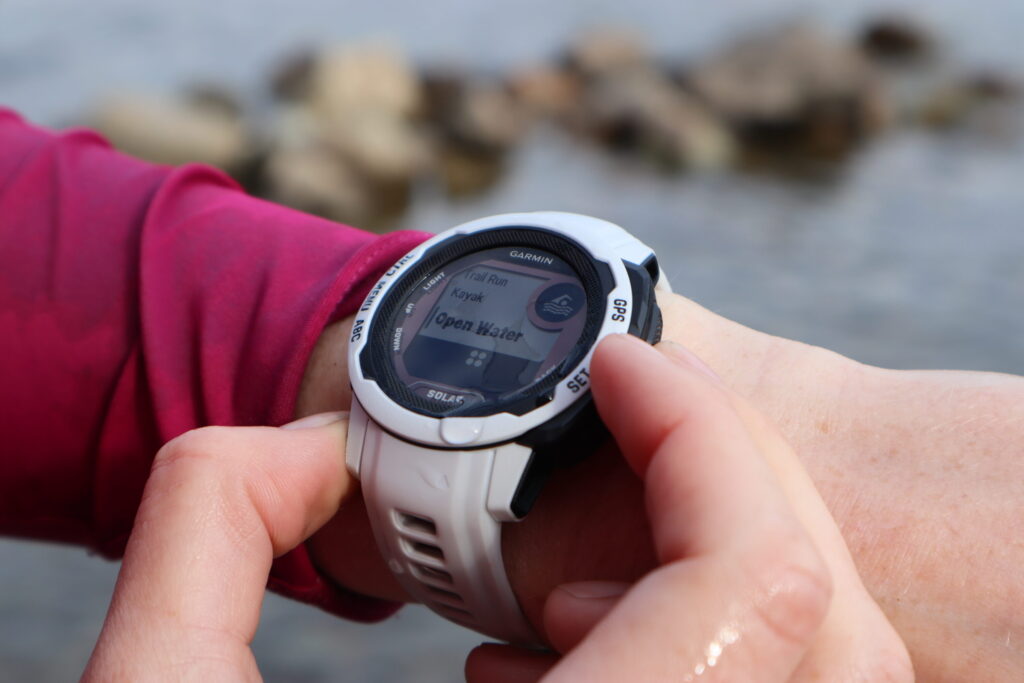
Review • Hannah Mitchell • Nov 13, 2023
Review: Garmin Instinct 2S Solar
Exceptional battery life and extensive activity tracking and metrics - the Instinct 2S Solar has a lot to offer in a neat, nifty little package.
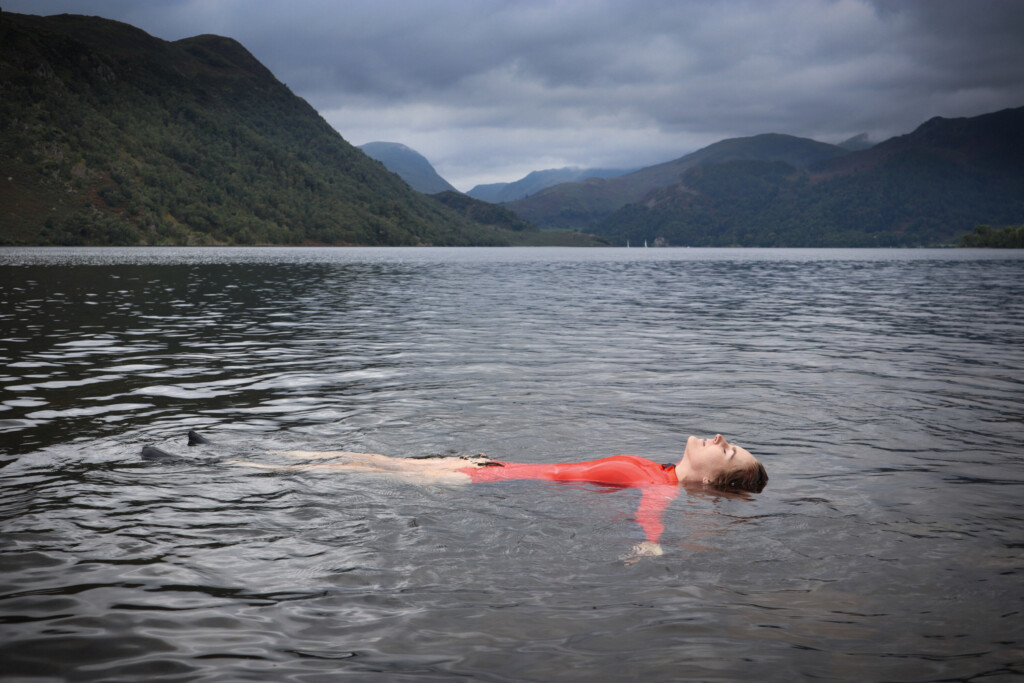
Review • Hannah Mitchell • Oct 24, 2023
How Good Is Finisterre’s New Wetsuit Rental Scheme?
Finisterre's scheme aims to improve accessibility to the sea by offering a more sustainable way to wear their Yulex surf and swimwear range

Review • Hannah Mitchell • Oct 04, 2023
Review: Rab Ionosphere 5.5 Sleeping Mat
Rab's Ionosphere 5.5 guarantees a warm, comfortable and quiet night for alpine bivies and camping in extreme conditions
You might also like
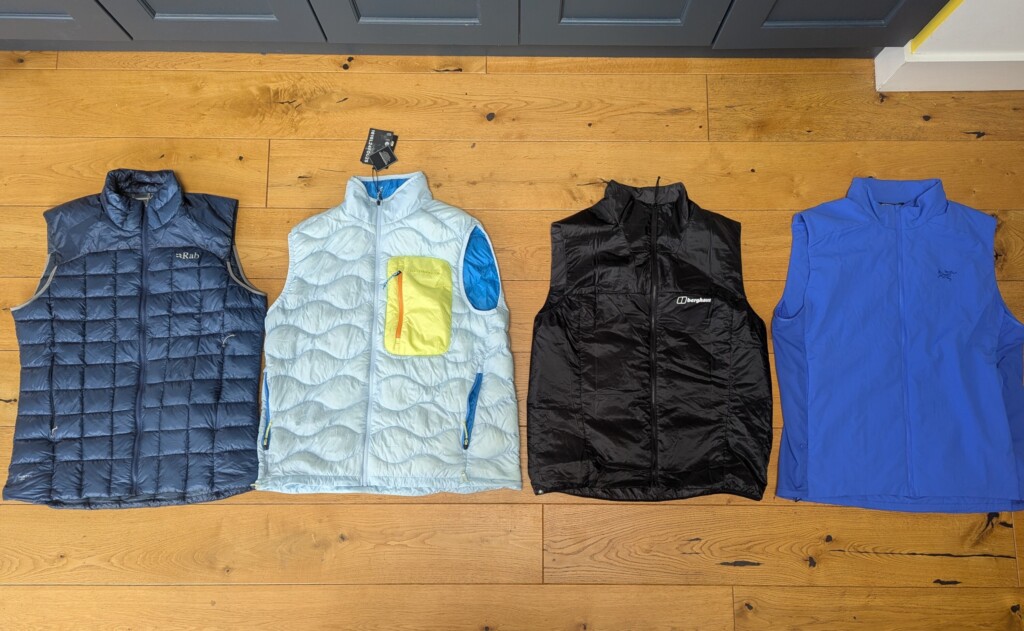
Review • Matthew Pink • Jun 06, 2025
Men’s Gilet Buyer’s Guide Summer 2025
Comparing and contrasting gilets from some of the main players in adventure
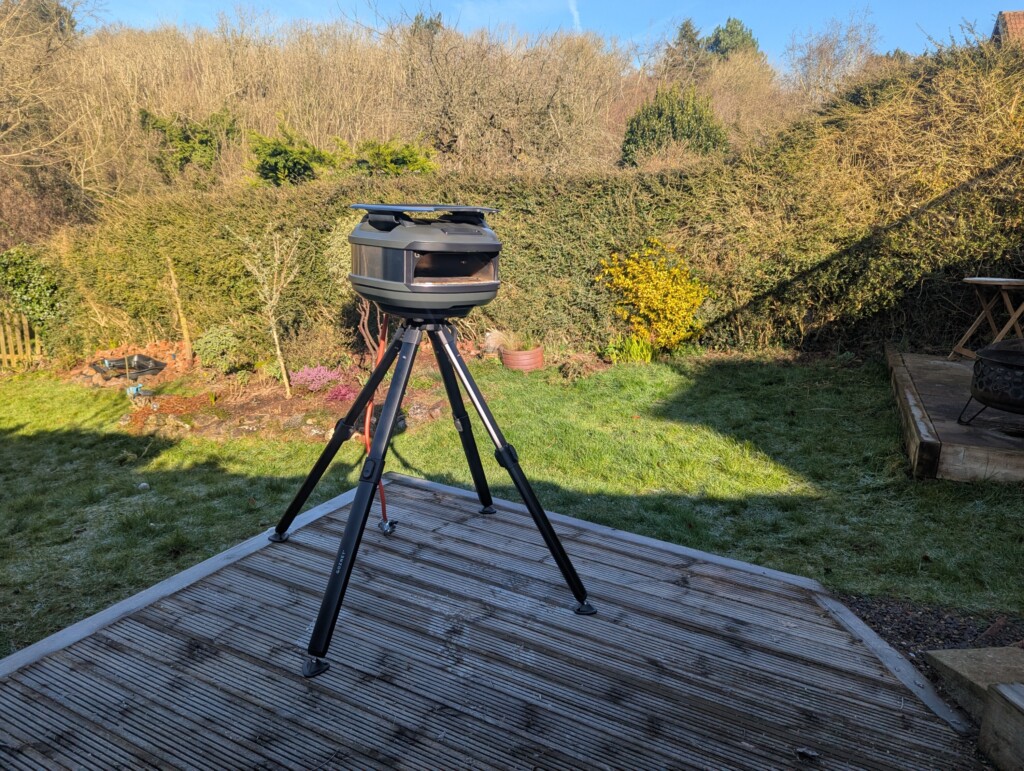
Review • Matthew Pink • Mar 14, 2025
Review: Gozney Tread portable pizza oven
A gas-fired pizza oven for fine food on the road or in the wild.
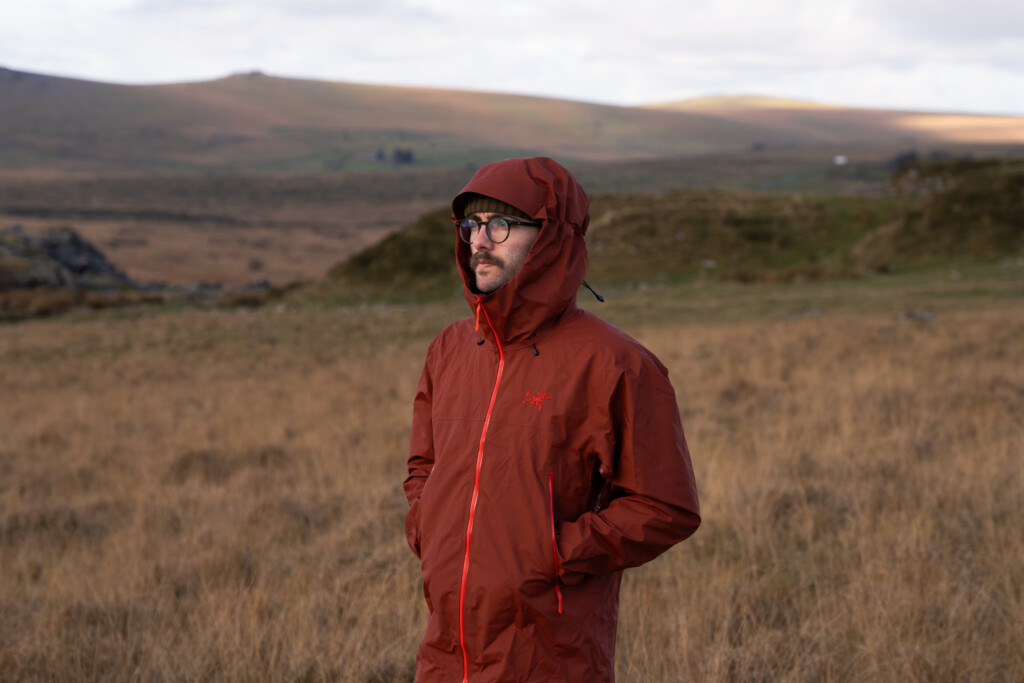
Review • Sam Firth • Jan 28, 2025
Review: Arc’teryx Beta SL Jacket
A jacket that is lightweight AND waterproof!

